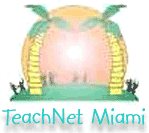|
How It Works:
Bring the enthusiasm of scientific discovery into your classroom with
these hands-on lessons, experiments and activities. It is important that
students have many hands-on experiences in their learning of science. By
means of this unit your students will have many opportunities to describe
and discuss observations as well as explain what they do and why. Your
classroom will become a fun-filled scientific lab as your “little
scientists” explore and discover with these lessons. Use these activities
for your students to enjoy and develop an excitement for science. Your
students will truly love these activities and experiences.
Standards:
Students will classify objects that will sink or float. Students will use
simple graphs, pictures, written statements, and numbers to observe,
describe, record, and compare data. Students will work with small groups to
collect information. Students will participate in observational
investigations in order to recognize that scientists repeat experiments to
verify results. Students will use a graph to represent results of science
experiments. Students know rocks are found everywhere. Students will
identify and describe rocks using observable properties, including size,
color, weight, shape, and texture. Students will know that matter exists in
different states: solid, liquid, gas. Students will observe, classify, and
communicate differences among liquids, solids, and gases. Students know
examples of solids, liquids, and gases. Students know that objects may be
moved be being pushed and pulled with magnets. Students will participate in
repeated observational investigations. Students will learn that temperature
can influence chemical and physical reactions Students will investigate how
cold temperature affects liquids and solids. Students will observe a liquid
turn into a solid(ice cream).
Estimated Class Periods To Complete:
10 or more
Software Materials Used:
Software needed to complete projects include multimedia presentation
software such as KidPix, and a word processing with spreadsheet program such
as ClarisWorks, AppleWorks, Microsoft Excel, etc.
Keywords:
sink, float, heavy, light, bubbles, blow, solution, rocks, geologist,
estimate, texture, balance, solid, liquid, gas, magnet, attract, propel,
push, pull, ice-cream, liquid, chemical, reaction
Students:
This unit is appropriate for the primary grades. The lessons incorporate
activities suitable for different learning styles. The lessons can be
adapted to work with small groups or large groups of students. Students will
need basic skills in reading, writing, math, and technology. Some lessons
may require the help of parents or aids in the classroom since the younger
children may have difficulties with the computer or basic reading and
writing skills.
Overall:
This unit provides students the opportunity to investigate, explore and
learn about science in fun and meaningful ways and then take this
information to create technology rich projects.
Tips:
Conduct basic training on Internet navigation prior to beginning unit.
Bookmark and check all links to make sure they are still active. Have all
printables ready for students. Provide students with mini-lessons on using
KidPix and other software you will utilize.
|
About the Teacher: Terry Garcia is a creative kindergarten
teacher who is constantly seeking for meaningful and stimulating activities
in order to motivate and inspire her students. She has been teaching in the
Miami-Dade County Public School System for ten years. She recently received
the Teacher of the Year award at her school. She received her Bachelor's
Degree from Florida International University and has a Master's Degree in
Mathematics through Florida State University. She has been a part of the
Citibank Family Tech program for six years.
Subjects:
English &
Science
Grade Levels:
K & 1
Email Terry
|

